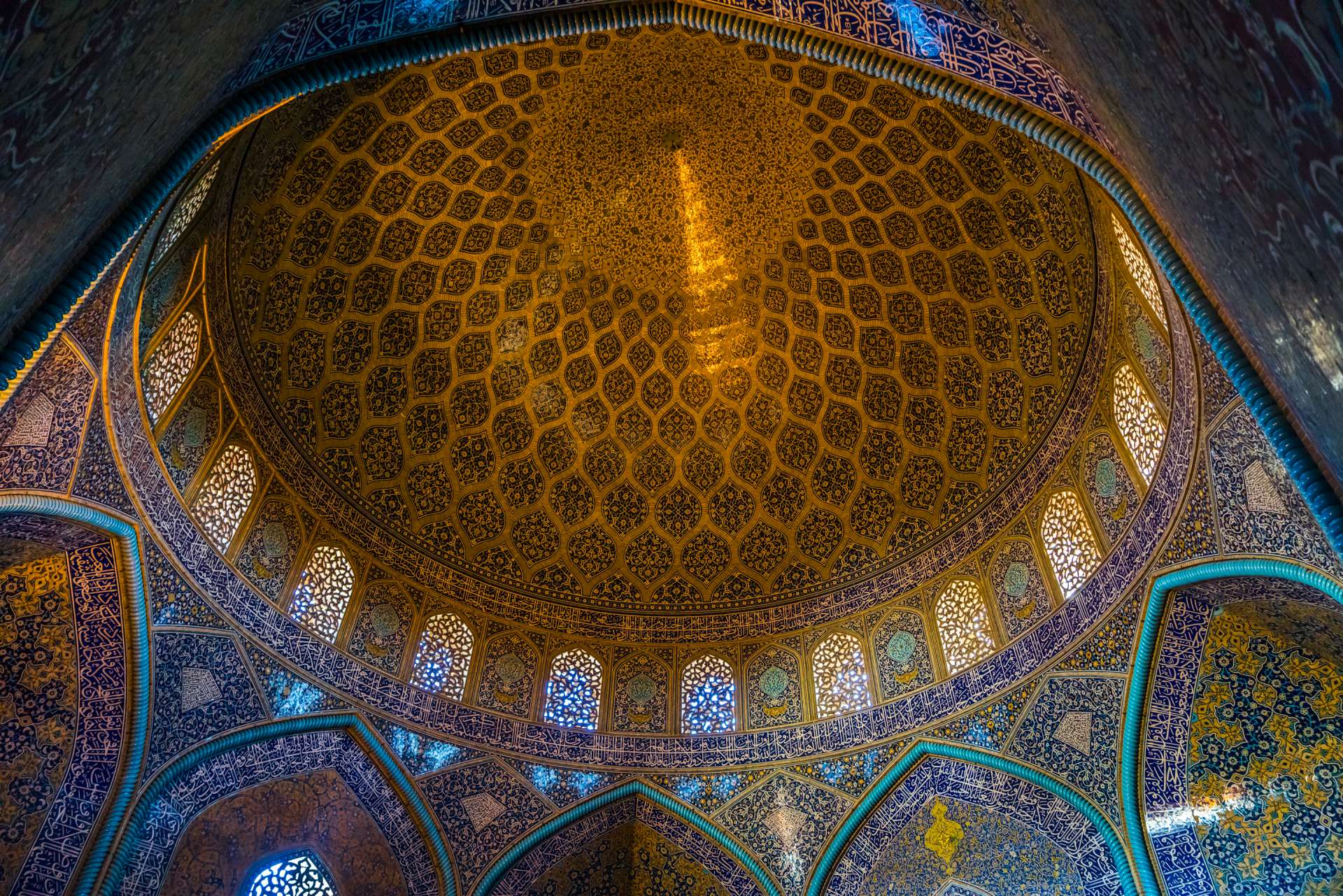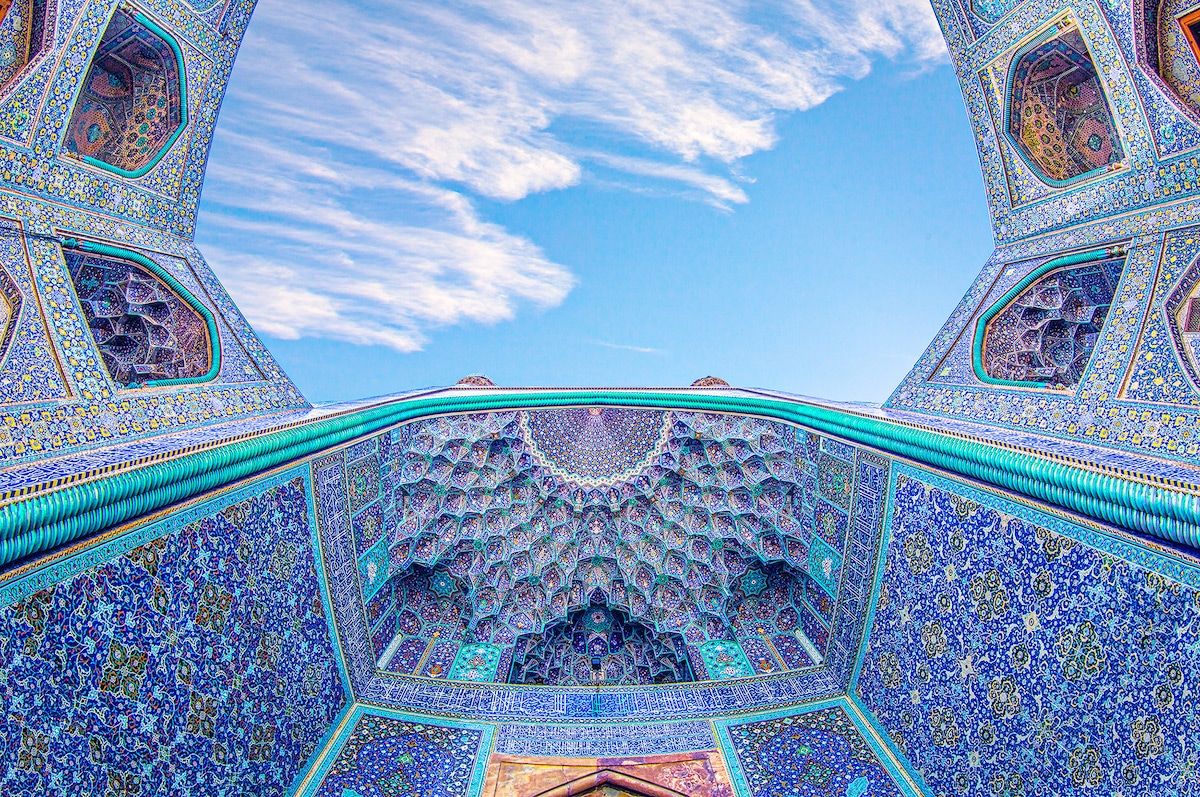Unveiling Iranian Architecture: A Journey Through Time And Beauty
The Enduring Legacy of Persian Architecture
Iranian architecture, known in Persian as *me'māri e irāni*, encompasses the vast architectural heritage of Iran and extends its influence across parts of West Asia, the Caucasus, and Central Asia. This rich tradition is deeply intertwined with Persian art and culture, with its formal beginnings often associated with the rise of the Achaemenid Empire around the 6th century BCE. Throughout its complex cultural past, marked by periods of both profound stability and turbulent political environments, Iran's architecture has not only survived but has also evolved, achieving a distinct and recognizable vernacular that sets it apart on the global stage. In the realm of architectural splendors, Persian architecture stands as an enduring testament to the rich cultural tapestry of Iran. It is a living chronicle that reflects the profound cultural exchange, significant sociopolitical changes, and continuous artistic innovation that have shaped different eras of Iranian civilization. Every structure, from the grandest palace to the most humble dwelling, tells a story of adaptation, resilience, and an unwavering commitment to beauty and functionality. This legacy is not merely historical; it continues to inspire and inform contemporary design, showcasing a timeless appeal rooted in deep philosophical and aesthetic principles.Guiding Principles and Artistic Innovation in Iranian Architecture
Beyond the choice of materials and construction techniques, the guiding ideas behind Iranian architecture are just as vital to understanding its unique character. These fundamental principles shape buildings and entire cities in ways that seamlessly blend beauty with practical function. Persian architects have historically adhered to a set of core tenets, including an emphasis on harmony, proportion, and the integration of nature. They often follow profound religious symbolism and cultural traditions, creating spaces that are not just shelters but immersive environments designed to tell stories. The use of art and mythology is central to their design philosophy, transforming utilitarian spaces into places of wonder and contemplation. This is evident in the elaborate decorative tile work, which is not merely ornamental but often conveys intricate geometric patterns, calligraphic inscriptions, and stylized floral motifs that carry symbolic meaning. Furthermore, ingenious feats of engineering are hallmarks of Persian architecture throughout the centuries. From the sophisticated qanats (underground aqueducts) that brought water to arid lands to the innovative structural solutions for massive domes and arches, Iranian architects consistently demonstrated a mastery of construction that was centuries ahead of its time. These innovations allowed for the creation of breathtakingly grand and enduring structures that continue to inspire awe.A Chronological Tapestry: From Achaemenids to Sassanids
The history of Iranian architecture is a rich tapestry woven from various cultural and historical influences over millennia, spanning more than 5000 years. This extensive timeline begins with the foundational era of the Achaemenid Empire, laying the groundwork for subsequent architectural developments. However, it is the contributions of the Sassanids, who ruled Iran from 226 AD to the middle of the 7th century, that are considered of far greater artistic importance in the grand narrative of Persian architectural history.The Dawn of Grandeur: Achaemenid Period
The architecture of Iran during the Achaemenid period, roughly from 550 to 330 BCE, is largely developed based on the architectural styles prevalent in the north and west of Iran. This era is characterized by monumental scale, a clear expression of imperial power, and a synthesis of various regional influences, including Mesopotamian, Egyptian, and Greek elements, adapted to a distinctly Persian aesthetic. Grand palaces like Persepolis, with their colossal columns, intricate bas-reliefs, and vast hypostyle halls, exemplify the Achaemenid architectural prowess. These structures were not just administrative centers but also ceremonial complexes designed to impress and unify a vast empire, showcasing early instances of sophisticated urban planning and advanced engineering for their time.The Artistic Zenith: Sassanid Contributions
In contrast to the Achaemenids, Sassanid architecture, flourishing from 224 to 651 CE, is primarily based on the indigenous architectural style common in the central and eastern dry regions of Iran. This period marked a significant evolution, with the Sassanids adapting and expanding previous styles and techniques to create truly innovative forms. They are credited with pioneering the use of the squinch arch, a revolutionary architectural device that allowed for the transition from a square room to a circular dome, a feature that would become central to Islamic architecture. The Sassanids also perfected the *iwan*, a vaulted hall open on one side, which became a defining element in later Persian and Islamic buildings. A prime example of their monumental achievements is the rebuilding of the Parthian capital at Ctesiphon, particularly the Taq-e Kasra, a massive *iwan* that remains the largest single-span vaulted arch of unreinforced brickwork in the world. The Sassanid era is often seen as a bridge between ancient Persian traditions and the subsequent Islamic period, demonstrating remarkable advancements in structural engineering, material usage (especially brick and stucco), and decorative arts, firmly establishing their contribution as a zenith in Iranian art and architecture.The Fusion of Faith and Form: Islamic Iranian Architecture
The advent of Islam in the 7th century AD marked a pivotal transformation in Iranian architecture. Islamic architecture in Iran emerged following the Arab conquest, and rather than erasing existing traditions, it embraced and profoundly enriched them. This period saw the remarkable intersection of Persian architecture and Iranian Islamic art, resulting in a unique and visually stunning architectural style. Iran’s architecturally striking buildings are a direct result of this masterful fusion of pre-Islamic Persian design principles with the new aesthetic and functional requirements of Islamic worship and governance. Over time, this style improved and evolved, reaching its pinnacle between the 15th and 17th centuries, particularly during the Safavid dynasty. It was during this era that Persian architecture became, as the renowned historian and archaeologist Arthur Pope famously said, "the supreme Iranian art." Notable examples of this magnificent style in Iran include the Sheikh Lotfollah Mosque and the Ali Qapu Palace, both iconic landmarks in Isfahan. The Sheikh Lotfollah Mosque is celebrated for its exquisite tilework, intricate patterns, and a dome that appears to change color throughout the day, while the Ali Qapu Palace showcases a masterful blend of residential and ceremonial functions with its grand *iwan* and stunning musical hall. These structures, along with countless others, exemplify the harmonious blend of spiritual devotion, artistic innovation, and engineering brilliance that defines Islamic Iranian architecture.Distinctive Elements and Global Footprint of Persian Architecture
Persian architecture is a powerful testament to the ingenuity, artistry, and cultural richness of the Persian people. Its key features—such as an emphasis on symmetry, the graceful sweep of arches, the majestic presence of domes, and the intricate beauty of tile work—have left an indelible mark on the architectural landscape of the Middle East and beyond. These elements are not merely decorative; they are integral to the structural integrity, environmental adaptation, and symbolic meaning of the buildings. The use of vibrant colors, complex geometric patterns, and calligraphic inscriptions on tiles creates a mesmerizing visual experience, transforming surfaces into canvases of profound beauty. Even after its disintegration, the Persian Empire left behind a deep imprint on the modern world, particularly through its architectural legacy. Distinctive elements of Persian architecture can be found in various countries all around the Middle East, Central Asia, and even parts of India, even today. We can observe characteristics of Persian architecture in the design of mosques, temples, the construction of brick or adobe domes, the elegant curves of arches, and the grandeur of ornamental entrances. This widespread influence underscores the universal appeal and adaptability of Persian architectural principles, demonstrating how a civilization's artistic vision can transcend geographical and temporal boundaries to shape the built environment of diverse cultures.Modern Iranian Architecture: Navigating Change
Modern Iranian architecture, while deeply rooted in its glorious past, has also been a dynamic field, constantly navigating the complexities of economic considerations and government oversight. It has enjoyed periods of significant economic prosperity, which often translated into ambitious construction projects and a flourishing of architectural creativity. Conversely, it has also endured hardships, reflected in the caliber and purpose of the architecture built during those times. The availability of resources, technological advancements, and the priorities set by national development plans have all played a crucial role in shaping the contemporary built environment. Beyond economic factors, the political landscape has also had a strong and undeniable effect on Iran’s architecture. Shifts in political ideology, changes in governance, and evolving national identities have influenced design philosophies, urban planning, and the types of structures prioritized for construction. For instance, periods of nationalist revival might emphasize traditional forms, while eras focused on modernization might lean towards international styles. This interplay between economic realities, political imperatives, and the enduring legacy of traditional forms creates a fascinating, albeit sometimes challenging, environment for architects in modern Iran, as they strive to balance heritage with innovation and functionality.The Glory Unveiled: Technical Mastery and UNESCO Heritage
The glory of Iranian architecture, which so vividly displays the art of Iranian architects and the quintessential elements of Iranian architecture, is fundamentally due to a meticulous adherence to a set of core principles. These include proper design, ensuring that every element serves a purpose and contributes to the overall harmony; accurate calculations, reflecting an advanced understanding of mathematics and engineering for structural integrity; the correct form of covering, particularly the ingenious solutions for domes and vaults that provide both aesthetic appeal and climatic control; and a rigorous compliance with technical and scientific issues in Iranian buildings. This holistic approach ensured that structures were not only beautiful but also robust, sustainable, and perfectly adapted to their environment. Despite some historical discontinuity in early archaeological exploration and a comparatively incomplete state of its understanding, any reservation about attributing to Iran primary status among the countries contributing to the art of the ancient Middle East must be reconsidered in light of the sheer volume and quality of its surviving architectural heritage. Today, the world recognizes this unparalleled legacy through its numerous protected sites. With an impressive twenty UNESCO World Heritage Sites, there is certainly no shortage of monuments to visit and explore in Iran. These sites, ranging from ancient Persepolis to the majestic Imam Square in Isfahan, stand as global affirmations of Iran's profound and lasting contribution to human civilization and architectural excellence.Experiencing the Splendor: Visiting Iran's Architectural Marvels
For anyone captivated by history, art, and the sheer grandeur of human creation, visiting Iran's architectural marvels offers an unparalleled experience. Each of the twenty UNESCO World Heritage Sites, along with countless other historical buildings, provides a unique window into the country's layered past and its enduring artistic spirit. Imagine standing beneath the soaring *iwan* of the Shah Mosque in Isfahan, marveling at the intricate tilework that seems to shimmer with an inner light, or walking through the ancient ruins of Persepolis, feeling the echoes of an empire that once spanned continents. These sites are not merely static displays; they are living testaments to the continuous evolution of Iranian architectural thought. They offer tangible lessons in sustainable design, innovative engineering, and the profound integration of art and life. Whether you are an architectural enthusiast, a history buff, or simply a curious traveler, the experience of witnessing these structures firsthand is deeply enriching. It allows for a visceral understanding of how Iranian architecture reflects cultural exchange, sociopolitical changes, and artistic innovation across different eras, making it an essential journey for anyone seeking to understand the depths of human creativity and resilience.Conclusion
Bursting with rich history, Iran's architecture helps weave a compelling tale of the country's long and illustrious Persian culture. From the monumental palaces of the Achaemenids to the sophisticated domes of the Sassanids, and further evolving into the breathtaking Islamic masterpieces of the Safavid era, Iranian architecture has consistently demonstrated an unparalleled blend of artistic vision, technical prowess, and profound cultural symbolism. Its distinctive elements—symmetry, arches, domes, and exquisite tile work—have not only defined the aesthetic of Iran but have also profoundly influenced the built environment across the Middle East and beyond, leaving an indelible global footprint. The journey through Iranian architecture is a journey through time, revealing how economic prosperity, political landscapes, and an unwavering commitment to beauty have shaped its forms. With twenty UNESCO World Heritage Sites standing as global beacons of its glory, Iran invites you to explore this incredible legacy. We encourage you to delve deeper into the wonders of this architectural tradition, perhaps by planning a visit to these magnificent sites, sharing your thoughts in the comments below, or exploring other articles on our site that illuminate the diverse facets of human heritage. The story of Iranian architecture is far from over; it continues to inspire, educate, and captivate, proving that true artistry transcends the ages.- Abby And Brittany Hensel Died
- Corde Broadus
- Marietemara Leaked Vids
- How Tall Is Tyreek Hill
- Nicole Kidman Filler

Iranian Architecture: wonders of Persia

Photographer Captures the Mesmerizing Beauty of Iranian Architecture

Nasir al-Mulk Mosque Shiraz, Iran : ArchitecturePorn